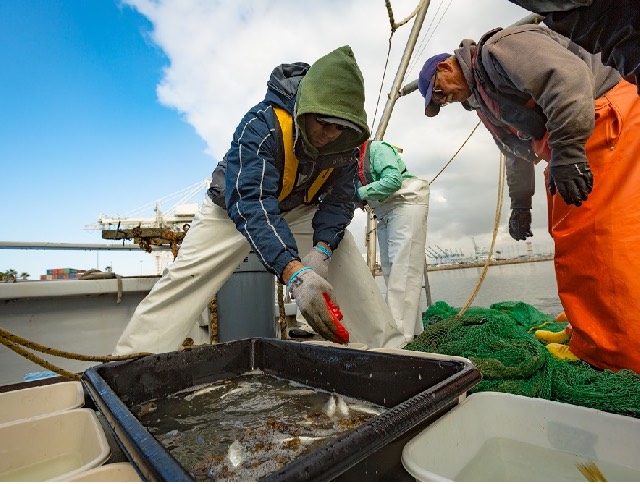Survey finds flourishing animals, plants at nation’s largest port complex
Marine life is thriving in San Pedro Bay harbors at levels not seen in multiple studies over two decades, according to a comprehensive survey of water quality, aquatic habitat and biological resources at the Port of Long Beach and Port of Los Angeles.
The survey conducted in 2018 and 2019 and released this week identified the highest recorded biodiversity of the four previous complex-wide studies, the first of which was in 2000. In total, more than 1,000 species of plants or animals were observed, including 104 species of fish, 87 species of birds and five species of marine mammals.
“We often say that sustainability and good jobs can co-exist at the Port of Long Beach,” said Long Beach Harbor Commission President Frank Colonna. “This is living evidence of that and the work of Port decision-makers, staff and our industry partners over these many years to enhance the environment.”
“Our commitment to environmental social responsibility is not restricted to improving air quality – water quality has also been a priority,” said Port of Long Beach Executive Director Mario Cordero. “Today we are seeing more and more pollution-sensitive species thriving in our harbor, meaning our water and sediment can support diverse and abundant life. We celebrate these environmental successes, while knowing there is more to do.”
Among other notable findings, biologists for the first time found nine species of fish typically associated with hard substrates such as reefs, including Garibaldi, sheepshead, horn shark, and moray eel. Their presence shows the existence of shallow, structured habitats such as riprap and breakwaters are providing nursery habitat for the fish to grow, forage and flourish.
State and federal wildlife agencies have given special-status designation to three of the 10 most abundant bird species observed in both the 2013 and 2018 biological surveys. The presence of these birds — brown pelican, elegant tern and double-crested cormorant — indicate the Port complex provides important foraging and roosting opportunities for these species. Also, kelp coverage in the summer of 2018 was more than twice that observed in any previous study, with little decrease between spring and summer.
The Ports and resource agencies that oversee wildlife in the harbors use the survey results to evaluate progress in improving the health of the natural resources under their stewardship. Read the survey report here.
The Port of Long Beach is one of the world’s premier seaports, a gateway for trans-Pacific trade and a trailblazer in goods movement and environmental stewardship. With 175 shipping lines connecting Long Beach to 217 seaports, the Port handles $170 billion in trade annually, supporting more than 575,000 Southern California jobs.









































